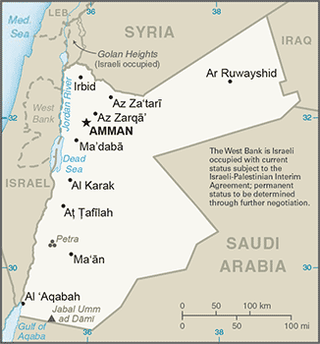Affirmative action refers to a set of policies and practices within a government or organization seeking to benefit marginalized groups. Historically and internationally, support for affirmative action has been justified by the idea that it may help with bridging inequalities in employment and pay, increasing access to education, and promoting diversity, social equity and redressing alleged wrongs, harms, or hindrances, also called substantive equality.

School discipline relates to actions taken by teachers or school organizations toward students when their behavior disrupts the ongoing educational activity or breaks a rule created by the school. Discipline can guide the children's behavior or set limits to help them learn to take better care of themselves, other people and the world around them.
People with disabilities in the United States are a significant minority group, making up a fifth of the overall population and over half of Americans older than eighty. There is a complex history underlying the U.S. and its relationship with its disabled population, with great progress being made in the last century to improve the livelihood of disabled citizens through legislation providing protections and benefits. Most notably, the Americans with Disabilities Act is a comprehensive anti-discrimination policy that works to protect Americans with disabilities in public settings and the workplace.

Education in Pakistan is overseen by the Federal Ministry of Education and the provincial governments, while the federal government mostly assists in curriculum development, accreditation and the financing of research and development. Article 25-A of the Constitution of Pakistan obligates the state to provide free and compulsory quality education to children of the age group 5 to 16 years. "The State shall provide free and compulsory education to all children of the age of five to sixteen years in such a manner as may be determined by law". Considering the challenges confronting the youth in Pakistan, it's hardly astonishing that well-off and educated young individuals and professionals are opting to depart the country whenever they have the opportunity, exacerbating the brain drain phenomenon.

Public education—from primary education through college—is open to every Saudi citizen. Education is the second-largest sector of government spending in Saudi Arabia. Saudi Arabia spends 8.8% of its gross domestic product on education, which is nearly double the global average of 4.6%. Islamic studies are part of the education system alongside scientific and social studies that vary from educational institution to another.

The right to education has been recognized as a human right in a number of international conventions, including the International Covenant on Economic, Social and Cultural Rights which recognizes a right to free, primary education for all, an obligation to develop secondary education accessible to all with the progressive introduction of free secondary education, as well as an obligation to develop equitable access to higher education, ideally by the progressive introduction of free higher education. In 2021, 171 states were parties to the Covenant.
Education in Tanzania is provided by both the public and private sectors, starting with pre-primary education, followed by primary, secondary ordinary, secondary advanced, and ideally, university level education. Free and accessible education is a human right in Tanzania. The Tanzanian government began to emphasize the importance of education shortly after its independence in 1961. Curriculum is standardized by level, and it is the basis for the national examinations. Achievement levels are important, yet there are various causes of children not receiving the education that they need, including the need to help families with work, poor accessibility, and a variety of learning disabilities. While there is a lack of resources for special needs education, Tanzania has committed to inclusive education and attention on disadvantaged learners, as pointed out in the 2006 Education Sector Review AIDE-MEMORE. The government's National Strategy for Growth and Reduction of Poverty in 2005 heavily emphasized on education and literacy.

The education system of the Hashemite Kingdom of Jordan includes basic, secondary, and higher education and has dramatically evolved since the establishment of the state in the early 1900s. The role played by a good education system has been significant in the development of Jordan from a predominantly agrarian to an industrialized nation over time.
The second goal in the United Nations Millennium Development Goal is to achieve Universal Primary Education, more specifically, to "ensure that by 2015, children everywhere, boys and girls alike will be required to complete a full course of primary schooling." Education is vital to meeting all other Millennium Development Goals: "Educating children gives the next generation the tools to fight poverty and prevent disease, including malaria and AIDS." Despite the significance of investing in education, the recent report, Fixing the Broken Promise of Education for All: Findings from the Global Initiative on Out-of-School Children—produced by UNESCO Institute for Statistics and UNICEF found that the world has missed this 2015 target of universal primary education, and there are currently 58 million children, of primary school age, out of school worldwide.
Comprehensive Sexuality Education (CSE) is a sex education instruction method based on a curriculum that aims to give students the holistic knowledge, attitudes, skills, and values to make healthy and informed choices in their sexual lives. The intention is that this understanding will help students understand their body and reproductive processes, engage in safer sex by reduce incidents of contracting sexually transmitted infections (STIs) such as HIV and HPV, reduce unplanned and unwanted pregnancies, as well as lowering rates of domestic and sexual violence.

Inclusion, in relation to persons with disabilities, is defined as including individuals with disabilities in everyday activities and ensuring they have access to resources and opportunities in ways that are similar to their non-disabled peers. Disability rights advocates define true inclusion as results-oriented, rather than focused merely on encouragement. To this end, communities, businesses, and other groups and organizations are considered inclusive if people with disabilities do not face barriers to participation and have equal access to opportunities and resources.

Education in Zimbabwe under the jurisdiction of the Ministry of Primary and Secondary Education for primary and secondary education, and the Ministry of Higher and Tertiary Education, Science and Technology Development for higher education. Both are regulated by the Cabinet of Zimbabwe. The education system in Zimbabwe encompasses 13 years of primary and secondary school and runs from January to December. The school year is a total of 40 weeks with three terms and a month break in-between each term.
Educational inequality is the unequal distribution of academic resources, including but not limited to school funding, qualified and experienced teachers, books, and technologies, to socially excluded communities. These communities tend to be historically disadvantaged and oppressed. Individuals belonging to these marginalized groups are often denied access to schools with adequate resources. Inequality leads to major differences in the educational success or efficiency of these individuals and ultimately suppresses social and economic mobility. Inequality in education is broken down into different types: regional inequality, inequality by sex, inequality by social stratification, inequality by parental income, inequality by parent occupation, and many more.
Housing discrimination in the United States refers to the historical and current barriers, policies, and biases that prevent equitable access to housing. Housing discrimination became more pronounced after the abolition of slavery in 1865, typically as part of Jim Crow laws that enforced racial segregation. The federal government didn't begin to take action against these laws until 1917, when the Supreme Court struck down ordinances prohibiting blacks from occupying or owning buildings in majority-white neighborhoods in Buchanan v. Warley. However, the federal government as well as local governments continued to be directly responsible for housing discrimination through redlining and race-restricted covenants until the Civil Rights Act of 1968.
Structural inequality has been identified as the bias that is built into the structure of organizations, institutions, governments, or social networks. Structural inequality occurs when the fabric of organizations, institutions, governments or social networks contains an embedded bias which provides advantages for some members and marginalizes or produces disadvantages for other members. This can involve property rights, status, or unequal access to health care, housing, education and other physical or financial resources or opportunities. Structural inequality is believed to be an embedded part of the culture of the United States due to the history of slavery and the subsequent suppression of equal civil rights of minority races. Structural inequality has been encouraged and maintained in the society of the United States through structured institutions such as the public school system with the goal of maintaining the existing structure of wealth, employment opportunities, and social standing of the races by keeping minority students from high academic achievement in high school and college as well as in the workforce of the country. In the attempt to equalize allocation of state funding, policymakers evaluate the elements of disparity to determine an equalization of funding throughout school districts.p.(14)

Females in Nigeria have a basic human right to be educated, and this right has been recognized since the year 1948 adoption of the Universal Declaration on Human Rights (UDHR) According to a report in 2014, female education has an important impact on the development of a stable, prosperous and healthy nation state resulting in active, productive and empowered citizens. Educating girls develop growth rates, encourages independence of the girl child and reduces social disparities. In 2009, the Nigerian Population Council (NPC) observed that women with higher educational qualifications are more likely to be in formal wage employment than those at the level of primary school education.
Discrimination in education is the act of discriminating against people belonging to certain demographics in enjoying full right to education. It is a violation of human rights. Education discrimination can be on the basis of ethnicity, nationality, age, gender, race, economic condition, language spoken, caste, disability and religion.

Unequal access to education in the United States results in unequal outcomes for students. Disparities in academic access among students in the United States are the result of several factors including: government policies, school choice, family wealth, parenting style, implicit bias towards the race or ethnicity of the student, and the resources available to the student and their school. Educational inequality contributes to a number of broader problems in the United States, including income inequality and increasing prison populations. Educational inequalities in the United States are wide-ranging, and many potential solutions have been proposed to mitigate their impacts on students.

People with disability in Luxembourg have some legal protections from discrimination and their needs can be provided through various government policies. Students with disabilities have a fairly good rate of completing school compared to peers without a disability. Luxembourg signed onto the Convention on the Rights of Persons with Disabilities on March 30, 2007. Much of the country is accessible, however, there are no legal provisions for reasonable accommodations.

Sustainable Development Goal 4 is about quality education and is among the 17 Sustainable Development Goals established by the United Nations in September 2015. The full title of SDG 4 is "Ensure inclusive and equitable quality education and promote lifelong learning opportunities for all".
















